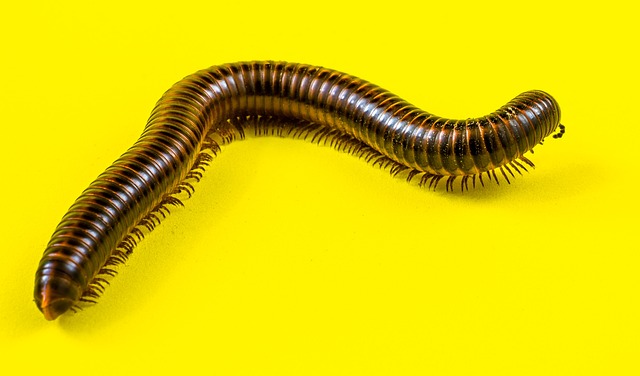– What’s the Difference?
There are many bugs and pests that are commonly mistaken for each other, such as ants and termites, or flies and mosquitos. Centipedes and millipedes are two creatures that also look very similar to one another, but they actually have quite a few differentiating characteristics. In this article, we’ll be exploring the differences between these two arthropods and explain why it’s important to correctly identify them.
Habitat
Centipedes
Centipedes are terrestrial animals, which means they typically inhabit terrestrial habitats. They are usually found in moist and humid environments, such as under logs, stones or bark, meaning they’re often found in forests or gardens.
Millipedes
Millipedes, on the other hand, prefer a bit more damp habitats, such as leaf litter, rotten wood, and soil. It is common to find millipedes living in gardens, woodlands, and marshy areas.
Appearance
Centipedes
Centipedes look quite different from millipedes. They have long, flat and slimy bodies. Most centipedes are yellow, gray or brown in color, often having dark stripes, and they have a pair of long antennae on their heads. They have segmented bodies, each segment having two legs, which give them their namesake: centipede means “100 legs”, though most centipedes have between 30-90 legs.
Millipedes
Millipedes, on the other hand, have rounder and shorter bodies than the centipedes. They have a single long segmented body and each segment has two pairs of legs. The color of millipedes range from grey, to yellow, to brown, and even black. Most millipedes also have “hairs” on their body for defense and can grow up to about 40 legs.
Behavior
Centipedes
Centipedes are predators, meaning they actively hunt and feed on other animals, while millipedes are herbivores, meaning they feed on plants and flowers. Centipede are predators of small insects, such as flies, moths, cockroaches, and even earthworms.
Millipedes
Millipedes, on the other hand, feed on decaying matter like leaves, wood, and sometimes even plant roots. They have nocturnal habits and can sometimes be found in the dark, damp corners of scenery.
Defense Mechanisms
Centipedes
Centipedes have a special pair of modified claws that are connected to poison glands. This allows them to quickly inject venom into their prey or predators for defense.
Millipedes
Millipedes have different means of defense. Most of them secrete toxic liquids from their bodies to deter predators, while some have special hairs on their bodies which irritate the predators.
People Also Ask
Are centipedes dangerous?
The venom of centipedes is venomous to humans, but most centipedes are too small to do much damage. However, some species, like the giant centipede, possess powerful venom that can cause severe pain and swelling.
How do you tell the difference between a centipede and a millipede?
Centipedes have long, flat and slimy bodies with one pair of long antennae. Millipedes have short and round bodies with two pairs of legs per segment.
Do centipedes bite humans?
Most centipedes are too small and fragile to bite humans. However, some centipedes have powerful venom that can cause pain and swelling, so it’s better to be careful when handling them.
What do millipedes eat?
Millipedes eat decaying matter such as leaves, dead wood, and other plant roots. They also occasionally eat small insects.
Do millipedes bite humans?
Millipedes do not bite humans; however, they can secrete a fluid that can cause skin irritations or rashes if handled without proper care.
Final Words
Centipedes and millipedes are two creatures that may look similar but are actually quite distinct from each other. While both are arthropods, their body structure, behavior, and habitat differ greatly. Centipedes are predators, while millipedes are herbivores, and they both have different defense mechanisms like poison and toxins. Knowing how to identify them is important in order to protect yourself and your family and enjoy a bug-free environment.

